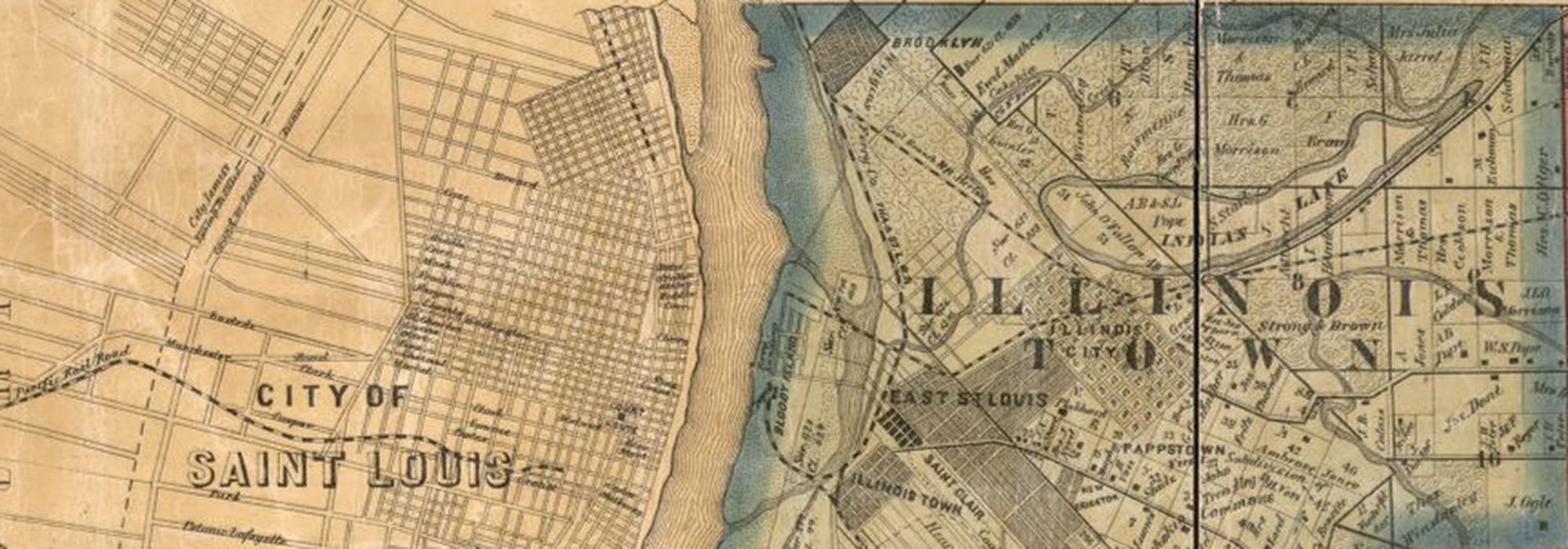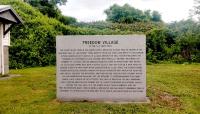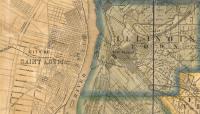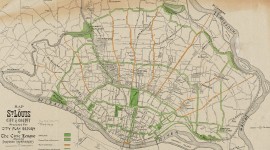In the late 1820s, Priscilla “Mother” Baltimore led eleven African American families from St. Louis, Missouri, across the Mississippi River to the free state of Illinois. The group settled along the Mississippi River bottoms in St. Clair County, Illinois, two miles northeast of downtown St. Louis, and established an unincorporated village. Missionary William Paul Quinn helped establish the Brooklyn African Methodist Episcopal (A.M.E.) Church (now Quinn A.M.E. Church) in the new settlement, which was then known as Freedom Village. Both the A.M.E. Church and the Antioch Baptist Church, founded in 1838, served as stations in the Underground Railroad. In 1837 the town was platted by five white abolitionists and became known as Brooklyn. Although more rights were granted to African American people in Illinois than in St. Louis, including the right to freely work and earn wages, Illinois laws still deprived them of the rights to vote or to govern their own town. Following the Civil War and the passing of the Thirteenth, Fourteenth, and Fifteenth Amendments, Brooklyn became in 1873 one of the earliest villages incorporated by African American people in America. Though incorporated, the village continued to be affected by discrimination into the twentieth century.. The street grid, roughly five blocks long and five blocks wide, has remained largely unaltered since the town’s incorporation. Both the Quinn A.M.E. Church and Antioch Baptist Church are extant, though the remainder of the town’s historic village has been demolished and replaced by twentieth century commercial and residential buildings.
In the 21st century, the planned construction of the Stan Musial Veterans Memorial Bridge prompted a 2002 archaeological investigation which revealed evidence of historic occupation, including the remains of the original Freedom Village founded by Mother Baltimore. Surveys and excavations undertaken by a joint team from the Illinois State Archaeological Survey and the University of Illinois continue to yield historic material, including evidence of a large prehistoric settlement. Brooklyn is sometimes referred to as Lovejoy, in honor of abolitionist Elijah Lovejoy, who was killed in Alton, Illinois in 1837.










